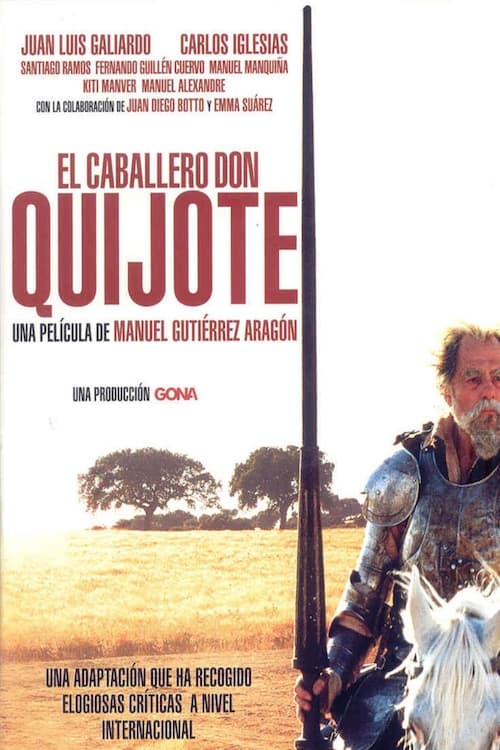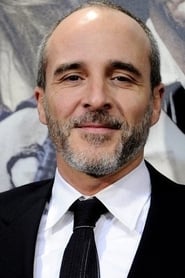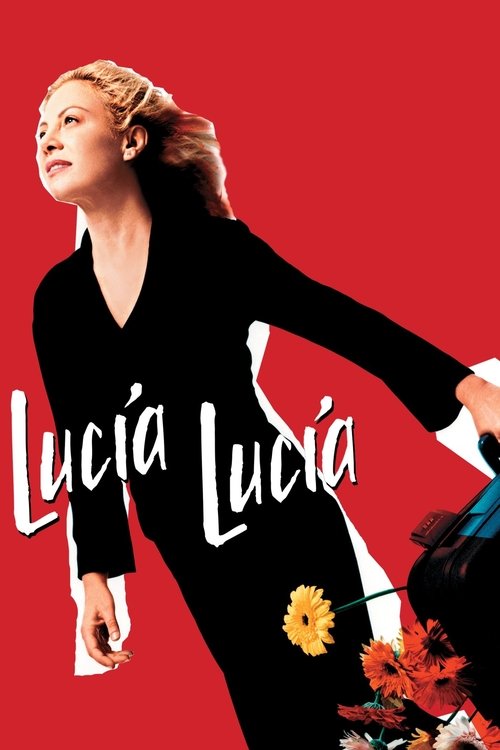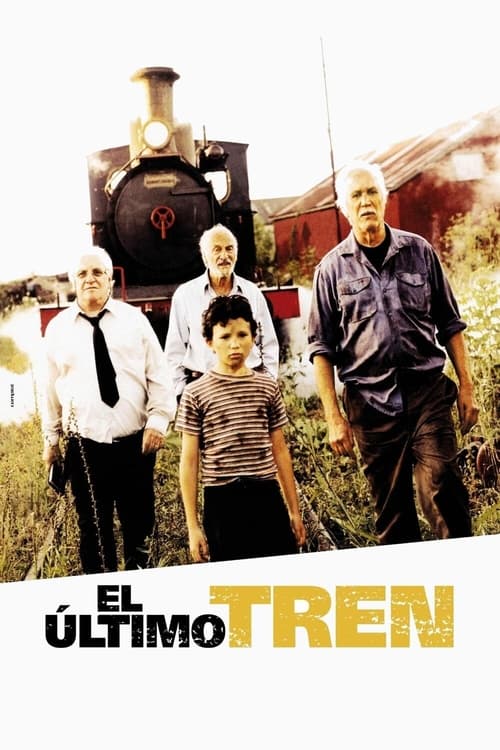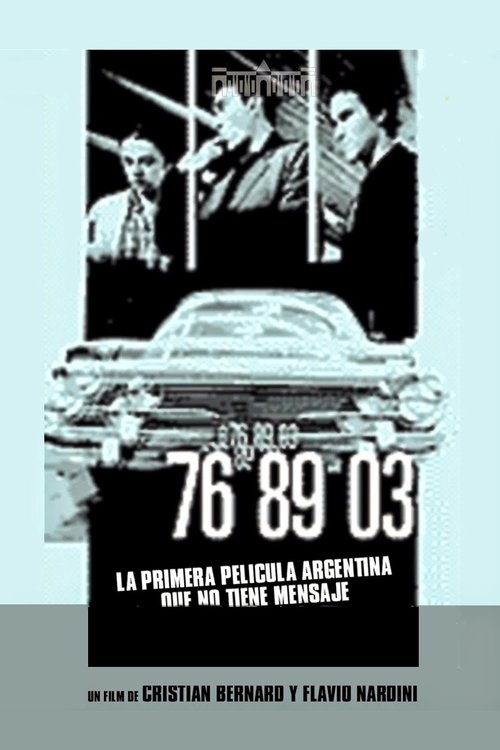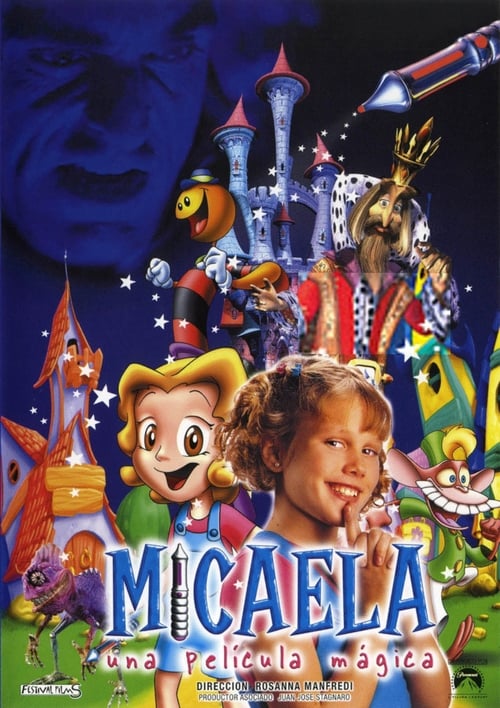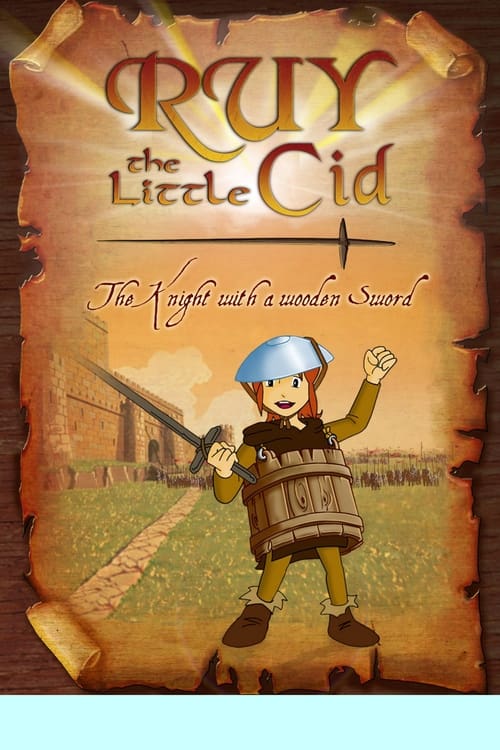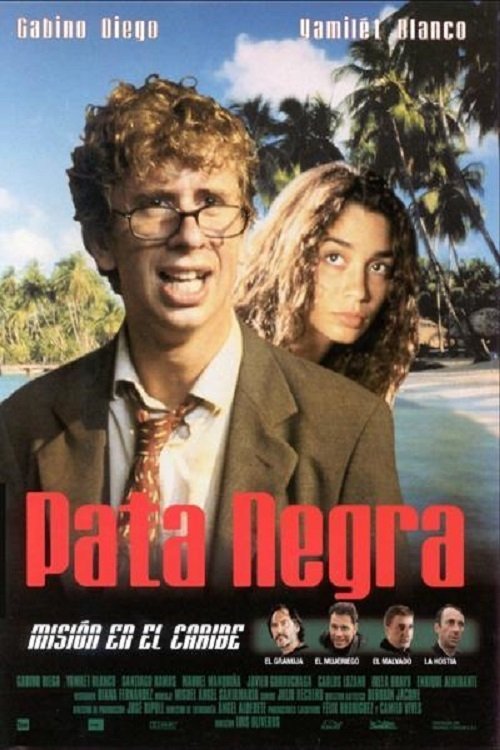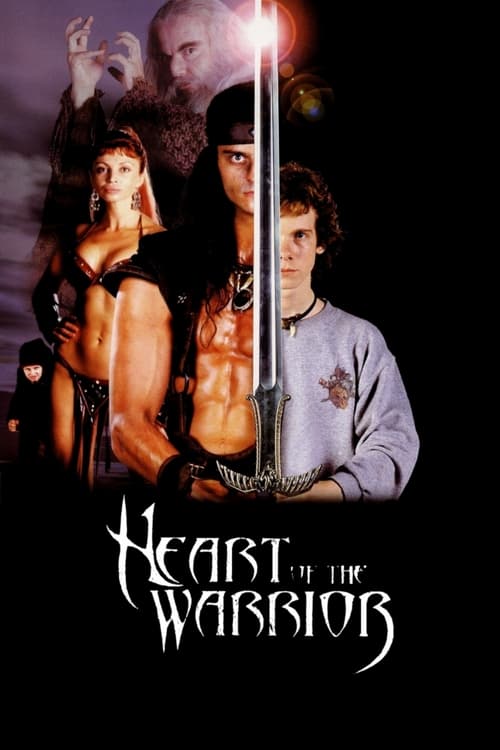
Ask Your Own Question
What is the plot?
In the early 17th century, under the vast, sun-drenched skies of La Mancha, Don Quixote de la Mancha, an aging nobleman played with solemn conviction by Juan Luis Galiardo, sits amid a clutter of well-worn chivalric tomes and battered armor in his modest home. His frail figure contrasts sharply with the fiery resolve in his eyes as he mutters passages from his beloved romances, lamenting the decay of honor and valor in the world. "I am Don Quixote de la Mancha, knight errant, defender of the oppressed and champion of Dulcinea del Toboso!" he declares with a voice both trembling and resolute, donning his makeshift armor with a reverence that transforms his humble surroundings into the stage of a grand quest.
By his side stands Sancho Panza (Carlos Iglesias), a simple farmer with a weathered face and a pragmatic mind, tending to his donkey, Quiteria. Sancho's earthy humor tempers Don Quixote's lofty idealism, yet he is drawn into the nobleman's dream, reluctantly agreeing to accompany him. Their bond is forged in the fires of shared purpose and contrasting worldviews, setting the tone for the odyssey ahead.
Their journey begins along the dusty roads of the Spanish countryside, the landscape rolling and golden beneath the relentless sun. The road to Toboso stretches before them, a ribbon of earth winding through fields and villages. Along the way, they encounter innkeepers, shepherds, and travelers, each interaction a brushstroke in the tapestry of their adventure. The world they traverse is one caught between reality and fantasy, where the echoes of chivalry still linger in the hearts of a few.
The village of Toboso, small and rustic, is surrounded by fields and guarded by the men of Don Diego (Santiago Ramos), a formidable nobleman whose dark ambition casts a shadow over the land. Dulcinea del Toboso (Marta Etura), the idealized lady of Don Quixote's heart, is imprisoned in a stone tower within Don Diego's fortified castle. The tower rises stark against the sky, its windows narrow and forbidding, a prison both physical and symbolic.
Don Quixote's quest to rescue Dulcinea leads him into direct conflict with Don Diego's forces. The first major confrontation unfolds in the great hall of Don Diego's castle, a cavernous room adorned with tapestries and weapons. Here, Don Quixote faces Captain Alvaro, Don Diego's lieutenant, in a duel charged with tension and desperation. The clash of swords rings out, steel flashing in the dim light. Don Quixote, wielding his sword and shield with surprising vigor, defeats Captain Alvaro, who falls lifeless to the ground, his death marking the first blood spilled in this struggle for justice.
Yet the dangers multiply. In the dense, shadowed Forest of La Mancha, Don Quixote and Sancho are ambushed by a band of ruthless bandits. The forest is alive with menace--twisted branches, sudden movements, and the harsh cries of combat. Don Quixote fights with the fervor of a man possessed by his ideals, his sword striking true, while Sancho's quick wit and distractions sow confusion among their attackers. The bandits are vanquished, their threat extinguished by the knight and his squire's unlikely alliance.
Captured later by Don Diego's men, Don Quixote and Sancho endure interrogation and threats within the cold stone walls of the castle. Don Quixote's defiance remains unbroken, his voice steady as he proclaims his mission. Sancho, ever resourceful, manages a daring escape, slipping through shadows and guards to retrieve the hidden key to Dulcinea's tower. This key, a small but potent symbol of hope, unlocks the door to her cell, enabling her rescue.
A profound revelation dawns upon Don Quixote as he finally stands before Dulcinea. He perceives that she is not merely a noblewoman in captivity but a living embodiment of his dreams and ideals. His quest transcends the physical rescue--it is a journey to reclaim his own sense of purpose and restore the fading light of chivalry in a world grown dark. Dulcinea's letters, discovered earlier, reveal her love and gratitude, deepening the emotional stakes and binding their fates.
Don Diego's motives unravel in a tense confrontation where jealousy and lust for power emerge as the driving forces behind Dulcinea's imprisonment. He confesses that his actions stem from a desire to prevent Dulcinea's union with Don Quixote, revealing a personal vendetta that fuels the conflict.
The climax unfolds in the Tower of Dulcinea, where Don Quixote, Sancho, and Dulcinea find themselves cornered by Don Diego and his men. The tower's narrow stone corridors echo with the sounds of impending violence. Don Quixote confronts Don Diego in a final, brutal sword fight. The duel is fierce and intimate, the clash of steel underscored by years of pent-up tension and unyielding ideals. With a decisive thrust, Don Quixote stabs Don Diego, ending his reign of cruelty and jealousy. Don Diego collapses, his death marking the liberation of Dulcinea and the triumph of chivalry's spirit.
Sancho assists Dulcinea's escape through a secret passage, their footsteps light but hurried against the cold stone. Outside, freedom awaits beneath the open sky. The three return to La Mancha, where their arrival is met with quiet celebration. Dulcinea is reunited with her family, her ordeal ended.
In the film's closing moments, Don Quixote sits once more in his home, surrounded by his cherished books and worn armor. His face, illuminated by the fading light of sunset, bears a serene smile as he quotes from a chivalric romance: "The true knight is not he who conquers, but he who dreams." The camera lingers on his gaze out the window, capturing the enduring flame of hope and idealism as the sun dips below the horizon, casting a golden glow over the Spanish countryside--a poignant testament to the timeless power of dreams and the indomitable spirit of Don Quixote.
What is the ending?
In the ending of "Don Quixote, Knight Errant," Don Quixote, after a series of misadventures and battles against imagined foes, ultimately comes to terms with reality. He realizes that his quest for chivalry and honor has been a delusion. In his final moments, he renounces his knightly aspirations and dies peacefully, surrounded by his friends. Sancho Panza, his loyal squire, mourns the loss of his master, reflecting on their journey together.
As the film concludes, the themes of illusion versus reality and the nature of heroism are poignantly underscored, leaving a lasting impact on the characters and the audience.
The ending of "Don Quixote, Knight Errant" unfolds with a poignant sense of resolution and reflection.
Scene 1: The final confrontation takes place in a quiet, sunlit glade where Don Quixote, weary from his many adventures, sits on a fallen log. His armor is battered, and his face shows the weariness of a man who has fought countless battles, both real and imagined. Sancho Panza, his devoted squire, stands beside him, concern etched on his face. The air is thick with the weight of unspoken words as they both contemplate the journey they have shared.
Scene 2: Don Quixote gazes into the distance, his eyes filled with a mix of nostalgia and sorrow. He begins to speak, reflecting on the nature of his quests and the ideals of chivalry that have driven him. His voice trembles with emotion as he acknowledges the delusions that have guided him. He admits to Sancho that perhaps he has been chasing shadows, and the noble ideals he sought may have been mere fantasies. Sancho listens intently, his heart heavy with the realization that his master is coming to terms with the truth.
Scene 3: As the sun begins to set, casting a golden hue over the landscape, Don Quixote's strength wanes. He leans back against the log, his breathing becoming shallow. Sancho, filled with a mix of sadness and admiration, kneels beside him, holding his hand. In this moment, the bond between the two characters is palpable; it is a culmination of their shared experiences, laughter, and struggles. Sancho's loyalty shines through as he reassures Don Quixote that he has been a true knight in spirit, regardless of the reality of his quests.
Scene 4: In his final moments, Don Quixote closes his eyes, a serene expression settling on his face. He whispers a final farewell to Sancho, expressing gratitude for his unwavering companionship. The camera lingers on Sancho's face, capturing the tears that fall as he mourns the loss of his friend. The emotional weight of the moment is profound, as Sancho realizes that he has lost not just a master, but a part of himself.
Scene 5: The film concludes with a wide shot of the glade, the sun dipping below the horizon. The landscape is bathed in twilight, symbolizing the end of an era. Sancho stands alone, looking out into the distance, reflecting on the adventures they shared. The final image is one of solitude and contemplation, as the themes of illusion versus reality resonate deeply. The audience is left with a sense of bittersweet closure, understanding that while Don Quixote's dreams may have been unattainable, the journey itself was filled with meaning and friendship.
In the end, Don Quixote passes away peacefully, having reconciled his dreams with reality, while Sancho Panza is left to carry the memories of their adventures, embodying the enduring spirit of loyalty and friendship.
Is there a post-credit scene?
The movie "Don Quixote, Knight Errant," produced in 2002, does not feature a post-credit scene. The film concludes its narrative without any additional scenes or content after the credits roll. The story wraps up with the resolution of Don Quixote's adventures and his return to reality, leaving the audience with a sense of closure regarding his journey and the themes of idealism versus realism that permeate the film.
What motivates Don Quixote to become a knight errant?
Don Quixote, portrayed as an aging man who has become obsessed with chivalric romances, is driven by a deep desire to revive chivalry and restore justice in the world. His internal motivation stems from a longing for adventure and a belief that he can make a difference, despite his delusions.
How does Sancho Panza's character contrast with Don Quixote?
Sancho Panza serves as a foil to Don Quixote; he is practical, grounded, and often skeptical of his master's grandiose visions. While Don Quixote is idealistic and driven by lofty dreams, Sancho provides comic relief and a voice of reason, often questioning the reality of their adventures.
What are some of the key adventures that Don Quixote and Sancho Panza embark on?
Throughout the film, Don Quixote and Sancho Panza encounter various adventures, including battling windmills that Don Quixote believes to be giants, rescuing a damsel in distress, and confronting a group of bandits. Each adventure highlights Don Quixote's delusions and Sancho's pragmatic responses.
How does the character of Dulcinea influence Don Quixote's actions?
Dulcinea, whom Don Quixote envisions as a noble lady deserving of his devotion, serves as his inspiration and the embodiment of his chivalric ideals. Although she is a figment of his imagination, her perceived beauty and virtue drive him to perform heroic deeds, showcasing his romanticized view of love and honor.
What role does the theme of reality versus illusion play in Don Quixote's journey?
The theme of reality versus illusion is central to Don Quixote's journey, as he often confuses his fantasies with reality. His encounters, such as mistaking common objects for grand symbols of his quests, illustrate his struggle to reconcile his dreams with the harsh truths of the world around him, leading to both comedic and poignant moments.
Is this family friendly?
"Don Quixote, Knight Errant" (2002) is generally considered family-friendly, but there are a few scenes and themes that might be potentially objectionable or upsetting for children or sensitive viewers:
-
Violence and Combat: There are scenes depicting sword fights and battles, which may be intense for younger viewers. The violence is more stylized than graphic, but it could still be alarming.
-
Madness and Delusion: The central character, Don Quixote, experiences delusions and madness, which may be confusing or unsettling for younger audiences. His belief that he is a knight can lead to dangerous situations.
-
Themes of Isolation: Don Quixote's journey often highlights themes of loneliness and misunderstanding, which could evoke feelings of sadness or discomfort.
-
Dark Humor: Some scenes contain elements of dark humor that may not resonate well with all children, as they touch on the absurdity of his quest and the consequences of his delusions.
-
Emotional Struggles: Characters experience emotional turmoil, including feelings of failure and despair, which may be heavy for sensitive viewers.
Overall, while the film is designed to be entertaining and whimsical, these elements may require parental guidance for younger audiences.

